Some Cheddar suppliers are anxious to break their addiction to hard deals but for others they are essential to maintain growth
Trying to wean retail buyers and suppliers off deep-cut Cheddar promotions can seem like trying to persuade a cocaine addict he doesn’t need that next line.
But with 78% of branded Cheddar now sold on deal - up from 77% last year [Symphony IRI 52 w/e 12 May 2012] - some suppliers are saying it’s time to kick the habit and send brands to promotions rehab.
They sense a clear danger: in a market where everyone constantly offers cut-price value, no one is in the end seen as particularly valuable, leaving shoppers free to hop from one deal to the next instead of staying loyal to individual brands.
The question is, what’s the best strategy for becoming less reliant on aggressive price promotions? Can Cheddar brands take lessons from promotional tactics used in other categories? Or, with branded Cheddar sales showing healthy year-on-year growth of 10.1% in terms of value and 1.4% for volume [Kantar Worldpanel 52 w/e 10 June 2012], is there much less cause for concern about Cheddar’s addiction to promotions in the first place?
The trouble with price promotions is they are a double-edged sword - they risk undermining brand loyalty, but are also undeniably effective. For retailers, they are a way of offering value to consumers and to stand out from rival supermarkets, and buyers are clearly reluctant to contemplate a future without them. “Deep-cut promotions work very well, and in the current economic climate are welcomed by shoppers,” says Mark Cloudy, category buyer for cheese at The Co-operative.
And it’s not just the retailers who are keen on aggressive deals. The deep-cut mechanic offers advantages to brand owners too, especially for new brands trying to gain a foothold with consumers. First Milk’s Lake District Cheddar brand - 91% of which has been sold on deal over the past two years [Symphony IRI] - is a case in point. Commercial director Richard Hollingdale knows selling such a high percentage on deal is unsustainable in the long term, but says promoting heavily does offer clear short-term benefits. “It’s given us the distribution and brand awareness to break the mould,” he says.
Hollingdale adds challenger brands are also under pressure to follow the promotional lead of the category leader, and that leader - Dairy Crest’s Cathedral City - shows no sign of falling out of love with promotions, selling 83% of its volume on deal over the past year [IRI 52 w/e 12 May 2012].
Research shows a massive proportion of sales simply wouldn’t happen without promotions, and the branded Cheddar market would be a fraction of its size without them, claims Cathedral City marketing manager Jackie Wilson. “It is therefore not simply a case of stepping away from promotions, as the reduction in volume sold - even at a higher price - would dramatically shrink the market,” she says. Wilson adds it’s a fact of life that “a large proportion” of shoppers are deal-driven and buy purely on price, and there is very little that can be done to change that.
Müller Corner
Ran: 2011
This on-pack promotion offered a free thank-you gift - such as cow print wellies, bouquets of flowers and digital downloads - with every purchase. The offer, which was worth £1m and on more than 100 million pots, saw about three million gifts claimed, and significantly increased volume sale and household penetration, says Blue Chip.
Irn-Bru
Ran: 2008
Offering consumers a free glass for every two two-litre bottles bought, this on-pack give-away managed to turn an otherwise “dismal” summer for Irn-Bru around. By the end of the promotion, one in six Scots had an Irn-Bru glass in their home, with volume sales and household penetration up “significantly”.
Kellogg’s cereals
Ran: 2008
Kellogg’s cereals achieved their highest market share for two years on the back of this family-friendly on-pack deal, which offered families free tickets to go swimming. Run in association with British Swimming across a number of Kellogg’s brands, the offer gave shoppers a saving of more than £4 per free swim.
Orangina
Ran: 2011
Shoppers were offered a chance to win a £20,000 holiday to France, the first on-pack promotion endorsed by the French Tourism Agency. Brand owner AG Barr also offered a free “mystery gift” with each entry, ranging from cash to digital recipe cards and French phrase cards. The offer led to a double-digit sales uplift.
Toolkit of options
The feedback from retailers and key suppliers such as Dairy Crest and First Milk would suggest there’s little point in challenging the promotional status quo, but Carl Ravenhall, MD of Milk Link’s cheese business, begs to differ. He says claiming there’s nothing brands can do to change the situation is “pretty poor” - creative marketeers have a whole “toolkit of options” available to them and price mechanics should be one of many strategies.
Ravenhall points out the average selling price of “cheapest on display” own-label mature Cheddar works out at about £8/kg, but average prices for branded Cheddar can be as low as £6/kg. “This raises the question whether some of these ‘brands’ are nothing more than labels, as they are unable to generate a return as high as own label, let alone a premium.”
Or, as Wyke Farms MD Richard Clothier puts it: “If you’re cheaper than own label then you’re not a brand you’re just a discounting vehicle.”
The effect of aggressively priced Cheddar brands on the wider category is plain to see. Own-label sales have been sluggish over the past year, with volume down 1% and value up by just 4.4%, to £758.2m [Kantar] - much less impressive growth rates than those enjoyed by the brands.
Any suggestion that brands could be cannibalising own-label growth instead of growing the overall market is likely to worry retailers, which have been investing heavily in their own ranges as a means of pulling in greater margins and differentiating their cheese fixtures from the rest of the competition.
Stewart Hilton, creative director at promotions experts Blue Chip Marketing, goes one step further. He says deep-cut promotions on Cheddar brands mean retailers are not just potentially losing out on own label but also in other areas of the cheese fixture, not least because on-deal items often appear on gondola ends, allowing shoppers to quickly grab a piece of Cheddar and avoid the actual cheese aisle altogether.
“The category buyer misses the chance to sell wonderful regional and fruit cheeses” Stewart Hilton, Blue Chip
“The category buyer misses the chance to sell his wonderful array of regional, fruit and Continental cheeses, all of which have stronger margins,” he says. Given how popular branded Cheddar is with shoppers, it should be used to get people down the aisles, and not as a “roadblock”, he adds.
Cheddar brands keen to explore alternatives to deep-cut price promotions would do well to take a serious look at alternative mechanics used elsewhere in the grocery sector: for example, using on-pack offers to give free rewards to consumers and build loyalty, Hilton suggests. Blue Chip’s analysis of promotional mechanics used in branded Cheddar shows such offers are currently employed far less frequently than in other, adjacent cheese categories - in the past 18 months, just four on-pack promotions were run on branded Cheddar compared with 13 on-pack offers in processed and soft cheese. That’s a shame, says Hilton, because on-pack offers can be an incredibly effective tool. “By using monies re-tasked from price deals, manufacturers should actually be able to offer significant free rewards for consumers,” says Hilton.
First Milk is one Cheddar supplier that has recently dipped its toes in the water with on-pack giveaways, albeit on its kids-focused Dairy Maniacs snacks rather than on Lake District block Cheddar. Hollingdale says the promotion - which involved 5,000 lunchboxes being given away - “flew out in terms of the number of redemptions” coming through the Dairy Maniacs website.
However, retailers are far more sceptical about on-pack promotions and their ability to generate interest among shoppers. “On-pack giveaways are always the least appealing sort of promotions for the consumer,” asserts Cloudy, bluntly.
Hilton disagrees. He argues on-pack promotions that give away free rewards - marketed via an on-pack flash - have great potential. “A recent study of eye-tracking by I-Motions and the Institute of Promotional Marketing recorded that the best ‘free’ flashes deliver eye candy on a par with levels recorded for top-shelf magazines,” he claims.
On-pack promotions are relatively untapped territory for Cheddar brands at the moment, but there are potentially rich rewards for suppliers that can come up with innovative offers and demonstrate to retail buyers their brands bring something fresh, Hilton adds. “We know that buyers are actively looking for ways to add value to the shopper experience, and the brand that gets it right first time could have a real advantage in the battle for feature ends.”
“The best ‘free’ flashes deliver eye candy on a par with levels for top-shelf magazines” Stewart Hilton, Blue Chip
Access to shopper data
By moving away from price-based deals to offering promotions that require shoppers to redeem rewards - typically by entering their personal details on a brand website - suppliers could also gain access to valuable shopper data. If used intelligently, such data could prove a highly useful tool for brand managers in driving consumer loyalty, believes Clothier.
He is evaluating whether electronic coupons could deliver this for Wyke Farms, with a view to potentially using them for future promotions. “I can see a situation, where - if we sample cheese to three million people next year and we collect their data - we’ll have a big database of shoppers, which will enable us to drive purchase,” he says, adding coupons could allow brand owners to offer far more targeted discounts to loyal shoppers.
However, there are also potential drawbacks. Hollingdale warns of the “extreme couponing” phenomenon in the US, where deal-hungry shoppers collect any coupon they can get their hands on without ever becoming loyal to one individual brand. “There are shoppers who are out there to bargain-hunt and are not really interested in the brand,” he says.
But couponing need not be as simple as issuing a one-off coupon through a retailer loyalty scheme, magazine, or even on-pack. What’s to stop Cheddar brands taking the idea of, say, a coffee shop loyalty scheme - where the shopper gets their 9th coffee free - to encourage brand loyalty in Cheddar?
Hollingdale dismisses the idea as unworkable given the many more products - and more complex shopping experience - consumers are faced with in a supermarket compared with a coffee shop. “Anything that adds complexity or extra work for either the people who work in the supermarket or for the shopper, is going to fail,” he says. If suppliers are interested in using coupons, they need to do this through existing retailer loyalty schemes such as Nectar, which is used in Sainsbury’s, or via Tesco Clubcard, he believes.
Cloudy agrees a loyalty card system for Cheddar brands would be too difficult to administer. “Customers, I believe, would rather see an improvement in overall price,” he says.
To really change the game on Cheddar promotions, some suppliers are arguing for altogether more radical strategies - taking “the fight out of the store” and focusing on building consumer loyalty away from the supermarket cheese aisle. This could involve spending funds normally earmarked for in-store promotions on “experiential” marketing, including sampling.
Clothier says this approach is cost-effective and is now a “cornerstone” of the Wyke Farms brand strategy, with the company spending £1m on providing samples to two million consumers this summer. “If these people taste it and they like it and they like the brand experience, hopefully they’ll pick it up in store,” he adds.
First Milk is also warming to the idea of getting shoppers to engage with its brand before they enter the store. On Monday (3 September), the company will kick off a big sampling campaign for Lake District, providing lunch packs containing its Cheddar, Ryvita crackers and Baxters chutney via a guerrilla sampling campaign around railway stations and in office blocks in London, Birmingham, Manchester and Leeds.
“Deep-cut promos work very well and in this climate are welcomed by shoppers” Mark Cloudy, The Co-op
New entrants
New entrants to the Cheddar market could afford to be even more radical in their promotional mindset, believes Hilton. Breaking the deep-cut cycle in Cheddar requires a new brand to “re-invent or re-energise the whole category with some disruptive thinking and a totally new proposition capable of justifying a higher price,” he says.
This may sound like wishful thinking, but Hilton says new product launches in other categories show it can be done. “Think how Magners transformed the mature and sedate cider category, or how Philadelphia is enjoying over 10% sales uplifts by focusing on selling the brand as a cooking ingredient rather than just a spread,” he adds.
Pilgrims Choice owner Adams Foods - which sold 94% of the brand on deal over the past year [SymphonyIRI] - claims its new Mu brand, which was launched exclusively in Tesco last October, is already trying to provide a counterbalance to aggressive promotions. “The pitching of that brand has always been in between the standard private-label tier and brands, and we’ve been true to that through pricing,” says marketing director Alastair Jackson, with Adams steering clear of deep-cut deals on Mu.”It’s now on track to be a £5m to £6m brand by the end of the year - and that’s not been achieved through using half-price offers or bogof,” he says.
There is no shortage of ideas for how manufacturers could shift their focus away from price-based promotions, but given that retailers and most major suppliers agree price promotions are valuable, there’s no need to get rid of them altogether - simply running less aggressive price-based offers could be the answer.
And there’s evidence to suggest that some are biting the bullet. Wyke Farms prefers to focus on an everyday low price strategy, by offering ‘two for five pounds’ deals in preference to bogofs, Clothier explains.
It’s a similar story at Milk Link, with Ravenhall saying the company will be running “50p off” promotions and 25% price reductions as part of its current campaign, steering clear of more aggressive deals. “We have to make sure Tickler is not just attractive to people because of price,” he says.
Hilton agrees a strategy that focuses on giving shoppers more frequent, but smaller, discounts could bring greater longer-term success than deeper, but more infrequent, discounts. Research has shown offers with deep discounts enjoy higher responses from consumers, but don’t attract enough additional buyers to justify the extra money suppliers spend on them, he says. “The return on investment is much better at a lower discount level, and it’s far better to hit more people with a lower offer than to chase higher buy rates with bigger discounts.”
For Cloudy, the solution to overcoming deep-cut promotions is even simpler - base prices might have to come down. “The products are so expensive, meaning shoppers tend to only pick them up when they are on offer,” he says. If suppliers want to move away from heavy promotions, they need to reposition to lower retail prices, he adds.
Such a repositioning would certainly be a drastic step, but if that’s what’s needed to ensure the long-term health of Cheddar and adjacent cheese categories, perhaps it’s time suppliers and retailers took the plunge and worked on truly kicking the habit of a lifetime.







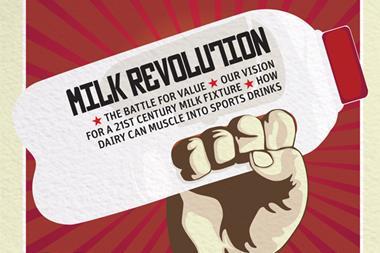
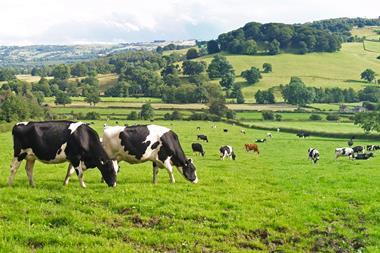
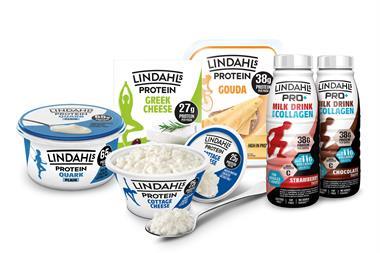
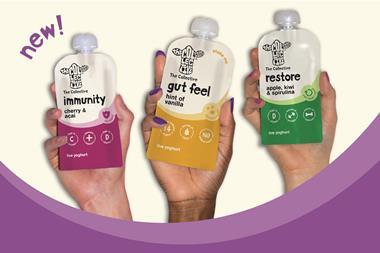







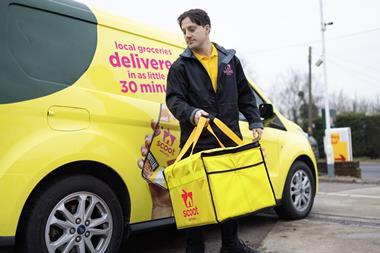
No comments yet